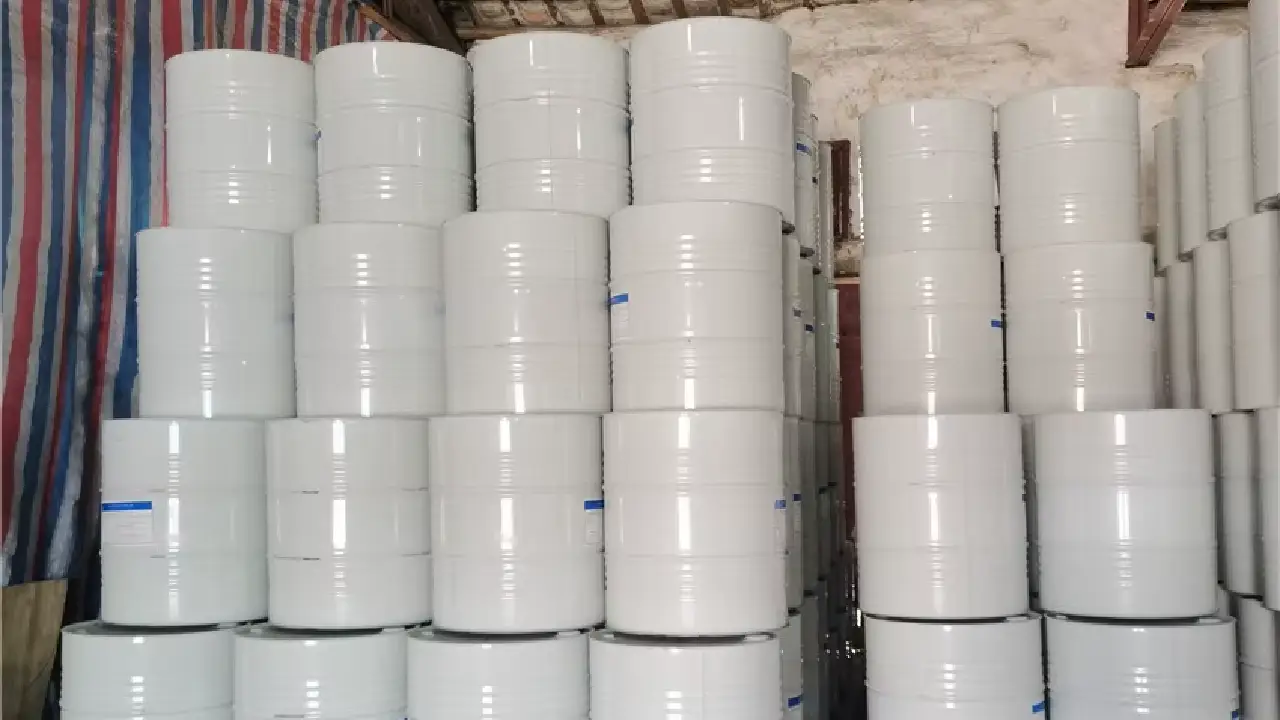Supplier of Monopropylene Glycol (MPG) from Turkey and UAE

Monopropylene Glycol (MPG), commonly referred to as 1,2-propanediol or simply propylene glycol, stands out as a versatile, clear, scent-free, and harmless fluid. It’s a staple in numerous sectors, including manufacturing, healthcare, and culinary fields. As a dependable provider of premium Monopropylene Glycol, we deliver top-quality MPG in large quantities to businesses spanning the Middle East, Africa, Asia, and further afield. This compound plays a pivotal role in everything from moisture-preserving agents and aroma carriers to de-icing agents and protective finishes.
In this resource, we’ll delve into MPG’s characteristics, available variants, practical uses, and the advantages of partnering with a credible Monopropylene Glycol distributor.
Understanding Monopropylene Glycol
Monopropylene Glycol (MPG) is an engineered diol alcohol derived through the controlled hydration of propylene oxide using catalysts. Its standout features—minimal toxicity, strong compatibility with biological systems, and seamless blending with water alongside various organic compounds—position it as a go-to option for edible products, medical preparations, beauty items, and heavy-duty operations.
Reputable bulk distributors of Monopropylene Glycol verify that their offerings align with rigorous regulations like FDA’s GRAS designation, USP, EP, and EFSA guidelines. This compliance renders it suitable for delicate uses such as essence extracts, liquid sweeteners, and immunization serums. Moreover, MPG emerges as an eco-conscious substitute for ethylene glycol across diverse mechanical setups.
Core Characteristics
- Molecular Composition: C₃H₈O₂
- Visual Traits: Transparent, hue-less, and fragrance-neutral fluid
- Dissolvability: Fully integrates with water, ethyl alcohol, acetone, and chloroform
- Moisture Affinity: Draws and holds humidity, excelling in hydration roles
- Heat Resilience: Performs consistently across extreme temperature ranges
- Biological Harmony: Deemed secure for ingestible, therapeutic, and veterinary purposes
- Flow Dynamics: Features reduced thickness for straightforward handling
Variants of Monopropylene Glycol
In our capacity as an expert Monopropylene Glycol distributor, we offer customized formulations to match precise sectoral demands:
- Culinary-Grade MPG: Boasting at least 99.5% refinement, this variant shines in essence carriers, hydration aids (classified as E1520), and edible goods & drinks. It adheres to FCC and USP benchmarks, safeguarding its appropriateness for ingestible items.
- Medical-Grade MPG: Achieving exceptional cleanliness of 99.8% or greater, it’s tailored for medicinal blends, supportive elements in elixirs, ointments, and inoculations. Full conformity to USP and EP protocols assures reliability and potency.
- Manufacturing-Grade MPG: Starting at 99% purity, this option supports de-icing solutions, surface treatments, varnishes, greases, and fabrication workflows while meeting standard operational criteria.
The Importance of Refinement Levels
Superior-grade MPG guarantees enduring quality, peak functionality, and risk-free handling—essentials in the realms of edibles, therapeutics, and personal care.
Practical Uses of Monopropylene Glycol
Monopropylene Glycol (MPG) excels as a multi-faceted substance, finding roles in countless fields thanks to its benign profile, superior blending capabilities, and robust water-binding attributes. It’s irreplaceable in both commercial production and everyday consumer scenarios. Our role as a reliable Monopropylene Glycol source equips us to supply variants optimized for culinary, healing, aesthetic, and operational needs.
1. Culinary and Drink Sector
In food processing and beverage creation, MPG’s harmless nature, biological alignment, and water-retention skills make it invaluable:
- Hydration Agent: Maintains dampness in pastries, sweets, milk-based items, and sweeteners, boosting longevity and mouthfeel.
- Carrier for Essences and Pigments: MPG adeptly solubilizes culinary scents, dyes, and fixatives, promoting even spread in drinks, condiments, and creamy goods.
- Aid in Preservation: Serves as a vehicle for antimicrobial mixes, prolonging the vitality of sealed edibles.
- Drink Formulations: Incorporated in vitality beverages, fizzy sodas, and fluid essence bases to uphold uniformity and flavor integrity.
2. Healthcare and Beauty Sector
MPG’s biological compatibility, dissolvability, and humidity-drawing prowess cement its place in treatments and grooming essentials:
- Solubility Booster for Medicines: Elevates the dispersibility of key therapeutic agents in tonics, slurries, and infusion preps.
- Ointments and Emulsions: Function as a hydrator and firming agent in dermal care lines, countering aridity and refining consistency.
- Hair Cleansers and Treatments: Bolsters lather, thickness, and endurance in fluid hair washes and softeners.
- Beauty Blends: Integral to scents, antiperspirants, and salves for enhanced durability and balanced ingredient dispersal.
3. Operational and Vehicle Uses
As a cornerstone in fabrication and transport solutions, MPG delivers secure, efficient performance:
- Freeze Guards and Chillers: Supplies harmless cold resistance in climate control units, cooling apparatuses, and vehicle thermal loops.
- Fluid Dynamics in Hydraulics: Forms the foundation for select oils and pressure transmitters, optimizing circulation and density.
- Surface Finishes and Varnishes: Deploys as a dissolver and humidity locker in pigments, lacquers, and protective layers.
- Printing and Bonding Agents: Refines uniformity and efficacy in fabrication dyes, ink streams, and glue recipes.
4. Livestock Nutrition
MPG extends to farming and pet sustenance:
- Caloric Supplement: Provides extra fuel in cattle rations, elevating lactation volume and caliber.
- Nutrient Enhancer: Improves appeal and uptake of vital elements in formulated feeds.
5. Synthesis Building Blocks
MPG acts as a foundational element in crafting various compounds:
- Resin Production: Key in forming non-saturated polyester matrices for building and transport sectors.
- Flex Agents: Heightens pliability and resilience in synthetics and composite materials.
- Stabilizing Components: Contributes to equilibrium agents in synthesis workflows.
6. Additional Operational Roles
- Ice Removal Mixtures: Utilized on airstrips and thoroughfares for dependable, low-risk frost management.
- Tech and Thermal Controls: Employed in warmth conveyance liquids and efficiency oversight setups.
- Green Processing Options: Its mild impact and breakdown potential suit sustainable fabrication paths.
Contrasting Monoethylene Glycol (MEG) with Monopropylene Glycol (MPG)
Though both Monoethylene Glycol (MEG) and Monopropylene Glycol (MPG) belong to the diol family and serve industrial roles, their molecular makeup, traits, and deployment zones vary significantly:
1. Molecular Makeup
- MEG (C₂H₆O₂): Features a duo of carbon units paired with dual hydroxy (-OH) attachments.
- MPG (C₃H₈O₂): Incorporates a trio of carbon units with matching hydroxy groups. This extra carbon imparts marginally greater density and reduced humidity pull compared to MEG.
2. Material Traits
- Harm Potential: MPG poses no ingestion risks and fits consumable, healing, and grooming contexts; MEG, conversely, carries toxicity risks unfit for direct use.
- Vapor and Solidification Thresholds: MEG edges out with elevated vapor points and depressed solidification, suiting it for fabrication chillants. MPG’s profile favors contact-safe and bio-aligned scenarios.
- Density and Hydration Hold: MPG outperforms in water binding, ideal for edible, aesthetic, and medicinal recipes.
3. Deployment Zones
- MEG: Focuses on polyester thread and PET molding, vehicle chillants, and broad operational cooling.
- MPG: Dominates in edibles, healing aids, beauty goods, and low-risk industrial tasks.
4. Risk Management
- MEG: Demands vigilant oversight owing to poisonous effects; intake or extended contact may injure.
- MPG: Viewed as benign and decomposable, fitting scenarios with prospective human interface.
To encapsulate, MEG suits high-volume fabrication with its potent but hazardous profile, whereas MPG offers a gentler, bio-compatible alternative for exposure-prone environments.
Handling Protocols and Packaging
MPG arises from propylene oxide’s hydration process, refined through advanced cleansing techniques for peak clarity.
Packaging and Shipment Logistics
- Offered in 200-liter HDPE or steel barrels, 1,000-liter IBC containers, or full-scale isotanks.
- Loading protocols prioritize integrity to avert spills or impurities, facilitating safe delivery for culinary, therapeutic, and operational demands.
Precautionary Guidelines
- Employ protective handwear, eye shields, and adhere to the Material Safety Data Sheet (MSDS).
- Keep in shaded, airy spaces, isolated from reactive substances.
Specifications of MPG
[/fusion_text]| Test | Standard | Reference |
|---|---|---|
| Specific gravity @ 20˚C | 1.0375‐1.0390 | ASTM D5164 |
| Color [Pt-Co] | Max. 15.0 | ASTM D5164 |
| Acidity (as acetic acid) (wt.% ) | Max. 0.005 | ASTM D5164 |
| Purity (on a dry basis) (wt.%) | Min. 99.0 | ASTM D5164 |
| Dipropylene Glycol (wt.%) | Max. 1.0 | ASTM D5164 |
| Distillation Range (760 mmHg) (˚C) | 185-190 | ASTM D5164 |
| Water (wt.%) | Max. 0.2 | ASTM D5164 |

